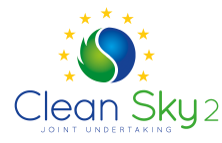On the 25th of November we presented the final results of our project entitled: “Enhanced flight training program for monitoring aircraft automation“.
The project was partially funded by the swiss Federal Office of Civil Aviation (BAZL), was lead by SWISS International Airlines Ltd., and supported by Prof. Dr. Robert Mauro from the Department of Psychology (University of Oregon) and Dr. Immanuel Barshi from NASA Ames Research Center, Human Systems Integration Division (NASA).
As part of this very successful project we developed a system that provides instructors with more detailed insights concerning pilots’ attention during training flights, to specifically improve instructors’ assessment of pilot situation awareness.
Our project has recently been featured in different media. ETH News has published a throrough article on our project: Tracking the eye of the pilot and different articles have been referencing this publication. Additionally, there have been two Radio interviews with Prof. Dr. Martin Raubal at Radio Zürisee and SRF4 (both in German).
Moreover, there have been publications during the course of the project:
Rudi, D., Kiefer, P. & Raubal, M. (2019). The Instructor Assistant System (iASSYST) – Utilizing Eye Tracking for Aviation Training Purposes. Ergonomics. https://doi.org/10.1080/00140139.2019.1685132.
Rudi, D., Kiefer, P., Giannopoulos, I., & Raubal, M. (2019). Gaze-based interactions in the cockpit of the future – a survey. Journal on Multimodal User Interfaces. Springer. Retrieve from https://link.springer.com/article/10.1007/s12193-019-00309-8.
Rudi D., Kiefer P. & Raubal, M. (2018). Visualizing Pilot Eye Movements for Flight Instructors. In ETVIS ’18: 3rd Workshop on Eye Tracking and Visualization. ACM, New York, NY, USA, Article 7, 5 pages. http://doi.acm.org/10.1145/3205929.3205934. Best Paper Award Winner.












